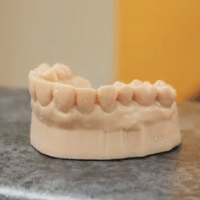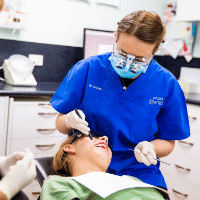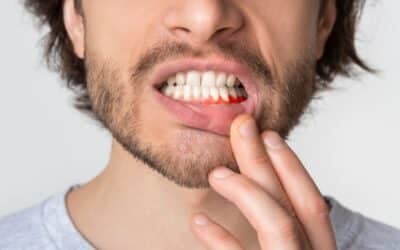Mercury: Great as a Planet, Lousy as a Leaky Amalgam Filling

Mercury. The smallest planet in our solar system and one of the principal inspirations of our collective culture.
Anyone familiar with the tools of astrology knows the particular cyclic phase of the planet Mercury at the time of birth is the qualitative representative of physical energy, and the facility, temperament and activity of the mind. Natal astrology determines that the position of Mercury symbolises the quality of energy propelling the mind through experience, to where it best functions.
Only slightly bigger than the moon, science fiction masters of imagination Isaac Asimov, H.P. Lovecraft and Arthur C. Clarke have all been stirred by Mercury. For painters, the historical use of the element by artists was for the beauty of reds – all prepared by the cooking of mercury and sulphur in their studios. Along with artists, hatters were the most adversely affected by the magic of mercury having used it for stiffening felt from the 1700s until just 1941. Mona Lisas and mad hatters shared more than simply imagination, utility, aesthetics and authenticity – their toxin naivety extended to the use of lead in their colours and creations.
Ironically, mercury was the accepted medical treatment for lead poisoning.
In its quicksilver form or as a salt, mercury was ubiquitously used throughout the societal strata for centuries. Mercurous chloride – a very heavy, soft, white, odourless, and tasteless halide mineral known as Calomel – was the drug of choice by at least Napoleon, Edgar Allan Poe, Andrew Jackson, and Louisa May Alcott.
Hilarious, intellectual and philosophers of the so-called Age of Enlightenment!
Brilliant scientific discovery (not!) Victorians … lucky you made up for it with telegraph and telephone.
Not a light bulb moment for the Edwardians, eh? Although there’s a typed list of the anti-parasitic, anti-syphilic, antipruritic anti-inflammatory diuretic mystic that mercury is.
Inexplicable, really, since the toxicity of inorganic mercury had been recognised since Roman times. It was noted the cinnabar mine workers in the largest and richest mine of red mercuric sulfide, Almadén, Spain, developed tremors, mental deterioration, and ataxia: the truest definition of stumbling into a bad job.
Using mercury to cure anything, let alone the abdominal pain, neurological dysfunction and irritability of lead exposure seems so utterly ridiculous from the standpoint of contemporary science and medical sophistication. What will be said in the future about prescribing anti-depressants for depression, and the set of technologies diagnosing and dosing diabetes because food technology creates excess consumption, is anybody’s guess.
Consider humble pie better-eaten on a high horse than a fence; and remember that a thick skin is often rather cratered.
The established naming theme for Mercury ‘s craters is famous deceased artists, musicians, authors and other contributors to the humanities. As of 2021, there are 414 named Mercurian craters of an identified 763. John Lennon, Truman Capote, the ever-inspired H.P Lovecraft, Bach and Sydney Bechet are punched into immortality on the planet Mercury. Chuck Berry’s 25km diameter is dwarfed by Lord Byron’s 106 and Madeleine L’Engle likely found that the only way to cope with something deadly serious is to treat it lightly.
Similar, possibly, to Galileo Galilei’s first time observing Mercury through the newly invented in 1631. Always visible to the naked eye, it’s a planet to which humans have long been familiar. As early as 2000BC, Sumerians mention its existence. The Babylonians called it Nabu. The name we know is that of the Romans, after their fleet-footed messenger, mediator, moneyman and pilferer ‘twixt the kingdom of the living and the realm of the dead.
Not so in every culture though.
In Hindu mythology, it’s Budha – not to be confused with Buddha – Germanic religions have Odin, to the ancient Chinese, Mercury was Chen Xing (Hour Star), related to the direction of north, and the element of water. Similarly, based on the Five Elements of wood, fire, earth, metal, and water, modern Chinese, Korean, Japanese, and Vietnamese cultures refer to the planet as the water star.
Such is the changeable, volatile, fickle, flighty, erratic mercurial nature of Mercury, that continues to intrigue since the first spacecraft visit in 1974 by NASA’s Mariner 10. The joint European Space Agency (ESA) and Japan Aerospace Exploration Agency (JAXA) mission BepiColombo is expected to reach Mercury in late 2025.
This little, innermost planet of our Solar System, closest to the sun, with a 600°C temperature swing between night and day is about as wide as the US. It gets as close as 47 million kilometres to the sun and 70 million kilometres away from it; its elliptical orbit sweeping around every 88 days, at almost 50km a second.
No wonder Mercury is the god of speed – never so important as when you’re dealing with cracked, damaged, or simply old mercury fillings. Mercury vapourises, with very harmful effects on the nerve, brain and kidney systems.
For at least the last decade it has been estimated that over time, older fillings can lose 95% of their mercury content. It doesn’t vaporise, but is instead absorbed by the body and stored in adipose tissue, like that of the brain, kidneys and liver. With no further exposure, small amounts of metallic mercury will eventually be expelled over about a 12-month period, and although not entirely clear, the half-life of mercury in the brain is estimated to be as long as approximately 20 years.
It should come as no surprise that heavy metals are not naturally found in foods. Yet mercury is predominantly spread throughout the food chain by global seafood consumption. Agricultural sprays and household products like thermometers, barometers and fluorescent lights contain metallic mercury. Should they break, along with lung and eye irritation, skin rashes, vomiting and diarrhoea, DNA molecules and chromosome chains are also very vulnerable to the effects of mercury.
As were millions of Queen fans in the 1980s. Freddie Mercury was untouchable. Vale, four octaves and a 7.04Hz vibrato. And not a crater named after you, but an asteroid.
Mercury certainly had teeth – an extra four gave him his overbite. Having mercury in your teeth as dental amalgam has been happening since the late 1820s. Many dentists now use resin composites, glass ionomers, porcelain, or gold alloys in order to avoid mercury. Amalgam is, however, still used – particularly for back teeth – because of its low cost, ease of application, strength, durability, and bacteriostatic properties.

One hundred years after its first use by dentists, German doctor Alfred Stock identified amalgam fillings as a source of mercury vapor and had his own fillings removed. Based on the thirty scientific papers he had completed, Stock began an international movement to stop the use of amalgam in dentistry. All his research was lost in WWII when his lab was bombed, and nothing further was done in the pursuit of the world ceasing to arrange for mercury to be in people’s mouths. The scientific findings on mercury poisoning began to emerge in the late 1970s, prompting the US Food and Drug Administration (FDA) to grandfather its use as a dental filling. In 1984, autopsies revealed that the amount of mercury found in brain and kidney tissue is in direct correlation to the number of amalgam fillings. The University of Calgary School of Medicine found that mercury in the teeth of pregnant women is found not only in their own blood and tissue, but that of their unborn babies.
Like that’s incredulous… Norway declared in 1991 that amalgam fillings were to be phased out and banned the use of most mercury-based products at the same time. Overwhelming evidence on the detrimental health and environmental effects had Sweden follow suit in 2008. Blood, urine and hair tests determine mercury levels.
0-9 nanograms per milliliter (ng/mL) is normal. Being that it’s in the air, the soil, water, food, and in things like cigarettes and cigarette smoke, vaccinations, old paint and batteries, exposure is inevitable.
Less than 10ng/mL is of no medical concern.
10 to 15 ng/mL denotes mild exposure; anything over 50 ng/mL indicates heavy contact with organic mercury. Chelation therapy – via either injection or pill – binds to the mercury and it exit the body faster than simply drinking more water and eating more fibre.
Difficult, one imagines, with all fingers crossed and tenuous cognitive ability.
The Journal of Biomedial Physics and Engineering published findings in 2016 of a significant increase in released mercury and microleakage from amalgam restorations from static magnetic fields (SMF), electromagnetic fields (EMF), and ionising electromagnetic radiations – produced by wi-fi, mobile phones, MRIs, X-
The high-risk groups revealed by the study are children, women between the ages of 15 and 49, the hypersensitive, and the elderly. They are findings so relevant that in 2020 the FDA issued dental amalgam warnings to those specific groups. Most particularly for the prevention of prenatal mercury exposure, given the rapidly increasing incidents of autism worldwide.
From as early as 2008, studies have found strong correlation between maternal and cord blood mercury levels; concomitant not only with the number of amalgam fillings, but also the length of time since the last. It is the basis of the recommendation that for women of reproductive age, at best amalgam fillings should be completely avoided; at worst, applied with absolute and extreme caution.
Research into the aetiology of autism shows exponential increase over the last two decades. Just in the US, from 2012 to 2014 marked a 30% increase of autism spectrum disorders diagnoses: 1.5% of children from 1.1% across all races, ethnicities, and social groups. Recent reports show that perinatal exposure to mercury also substantially increases the risk of attention-deficit hyperactivity disorder (ADHD). Mercury’s toxicity is an accepted neurotransmitter inhibitor, and the cause for critical imbalances of dopamine, serotonin, noreprenephrine and acetylcholine.
This heavy metal has become much more prevalent, and exceptionally insidious, in our food chain and environment over the last fifty years. Particularly in relation to fish, crustaceans, bivalves and molluscs.
Studies have found that even one amalgam dental filling can exceed the minimum risk level for mercury. The impact of wi-fi, mobile phones and medical equipment as mercury-releasing stressors, an amalgam filling is the asbestos dwelling of the mouth.
With composites and other materials widely available it’s crucial to both avoid mercury fillings in the future, and have them safely removed by a dentist certified in the Safe Mercury Amalgam Removal Technique (SMART).
The three faces of mercury: one to learn, one to yearn, and one to spurn.
The content has been made available for informational and educational purposes only. Plaza Dental does not make any representation or warranties with respect to the accuracy, applicability, fitness, or completeness of the content.
The content is not intended to be a substitute for professional personal diagnosis or treatment. Always seek the advice of your dentist or another qualified health provider with any questions you may have regarding a dental or medical condition. Never disregard professional advice or delay seeking it because of something you have read or seen on the Site.
Services we mentioned:
Related Articles
Tooth Sensitivity: Just Needs Sensitive Toothpaste, Or Symptom of Bigger Problems?
‘Sensitivity’ is the new buzzword in dentistry. Dentists are more sensitive than ever before to the needs of their...
Propolis Can Help Manage Gingivitis And Periodontal Disease
Propolis. Bee glue. The resinous tree, branch and leaf raw materials of certain plants that bees collect to make the...










